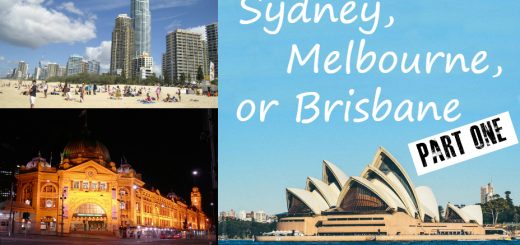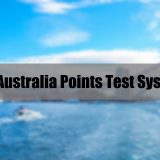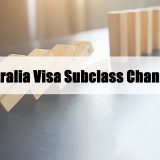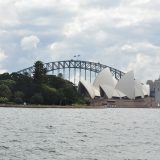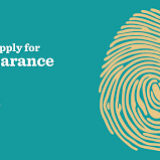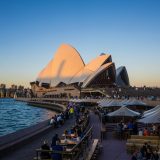Important things to do upon arriving in Australia (New Migrants)
On arrival to Australia there are a few really important things you should do first. Below are some tips with all the links you’ll need.
Tax File Number (TFN)
To receive an income in Australia you need a Tax File Number (TFN), so you should probably apply for this first. The TFN is nine numbers long.
https://www.ato.gov.au/individuals/tax-file-number/apply-for-a-tfn/foreign-passport-holders,-permanent-migrants-and-temporary-visitors—tfn-application/
You will need your TFN for a lot of different things like:
- Salary and wages
- Tax returns
- Any Centrelink or government agency payments
- Superannuation
Banks might also suggest that tell them your Tax File Number. It’d up to you to decide if you want to share this information. It will make it easier if you want a tax refund.
Register with Medicare
The Australian Government provides help with basic medical expenses through a scheme called Medicare.
A Medicare card is green and will have your name, your partner’s name and any children in your care. You should carry your Medicare card in your wallet or purse because you never know when you might need it.
There is more information about Medicare here: https://www.humanservices.gov.au/customer/services/medicare/medicare-card
And you can apply for your Medicare card using this form (click on ‘Medicare enrolment information PDF): https://www.humanservices.gov.au/customer/forms/3101
Sometimes a Medicare card can be used for ID purposes. Banks, police stations (for police check) and real estate agents will accept Medicare cards as ID.
Some of the things you can do with a Medicare card are:
Visit the doctor for a reduced fee
Many doctors in Australia give a Medicare ‘rebate’ – some doctors will charge you a full fee for a visit and ‘Medicare refund’ some of it the following day. Other doctors will ask you to ‘pay the gap’. This just means you pay a reduced fee and you don’t get a refund. Both a Medicare refund and pay the gap will work out to be about the same amount of money spent.
Some doctors will bulk bill, which means that they won’t care you at all and the cost will be sent to Medicare to pay.
When you first make a doctor’s appointment you should ask about their fees and a their Medicare rebate.
Go to a public hospital with no cost
In Australia you can attend a public hospital for free if you have a Medicare card. This is for emergencies and other things like surgery, having a baby, appointments arranged by your doctor or sickness. An emergency could be an injury, chest pain, difficulty breathing – anything you would call an ambulance for.
Medicare doesn’t cover:
- private patient hospital costs
- medical and hospital costs incurred overseas,
- medical and hospital services which are not clinically necessary, or surgery solely for cosmetic reasons,
- ambulance services (you can apply for ambulance ‘cover’/insurance separately but each State has their own rules.)
Other things Medicare covers:
- consultation fees for doctors, including specialists,
- tests and examinations by doctors needed to treat illnesses, such as x-rays and pathology tests,
- eye tests performed by optometrists,
- most surgical and other therapeutic procedures performed by doctors,
- some surgical procedures performed by approved dentists,
- specific items under the Cleft Lip and Palate Scheme,
- specific items under the Enhanced Primary Care (EPC) program,
- specified items for allied health services as part of the Chronic Disease Management Plan.
The information above is from this page: http://www.privatehealth.gov.au/healthinsurance/whatiscovered/medicare.htm
Open a bank account
In Australia, most income including salary or wages and government benefits are paid directly into a bank account. If you are paid in cash you will still probably want a bank account.
In Australia there are the ‘4 Big Banks’. They are:
- Commonwealth Bank
- Westpac
- NAB
- ANZ
There are also smaller banks (Bendigo Bank and St George for example) and credit unions. Credit unions are owned by the customers, and banks are owned by business and traded on the stock exchange.
When you open an account you will receive a key card, or a Visa Debit card to access your account. Your bank can set up phone and internet banking for you.
Two important numbers you will receive:
- The BSB number (also known as the ‘branch number’)
- The Account number
You will need both of these numbers for any paperwork to do with your account (eg getting paid, direct debit to a company). The bank should write these on a small card for you, if not, you can ask them to write it down for you.
ATMs
ATM fees vary a lot, so try to use the ATMs belonging to your bank to avoid any extra fees. Using an ATM that your bank owns is free. Shopping centres or big venues will have a few different ATMs to choose from.
It is free to withdraw money from the bank.
Register with Centrelink
Centrelink is a government agency which helps people through various forms of payment. They might contribute costs towards your general living expenses. This will also vary according to what you (and your partner) earn each week.
You can read more about Centrelink here, and also see if you are eligible for payments. https://www.humanservices.gov.au/customer/themes/migrants-refugees-and-visitors
When you register with Centrelink, you will be given a Customer Reference Number. This is often called a CRN, and it will be at the top of any letters you receive from them. If you have registered your email, Centrelink will send you letters to your email address. These letters look exactly the same as a paper copy would.
Waiting times for calling Centrelink can take a very long time – sometimes over an hour or more. If you can use the online services, this is the best option. You can also visit a Centrelink office, whoever they might direct you to the phone or internet anyway.
If you are successful in applying for a Centrelink payment it is important that you tell them exactly what your earnings were for the previous fortnight. If you are paid more or less you can let them know and they will adjust payment accordingly. If Centrelink give you too much money, you will need to pay it back, so it is best to tell them the exact amount.
Register for English Classes
The Adult Migrant English Language Program (AMEP) provides up to 510 hours of free English language tuition. Learning English will really assist you in your move to Australia.
The classes are offered in different ways:
- In a classroom (day and/or evening classes)
- Distance education (over the phone)
- A volunteer tutor who will visit you at home
- Online (at a pace you choose)
If you have children who aren’t in school (under five years old), free child care is provided for them while you are learning.
You can learn more about the AMEP here: https://www.education.gov.au/adult-migrant-english-program-0
The AMEP is run by ‘providers’, which just means that a particular place organises it. Each state has a number of providers, and you can find a long list of them here: https://www.education.gov.au/adult-migrant-english-program-service-providers
Enrol Your Children in School
If you have school aged children, they need to be enrolled in school. Extra English classes might be provided for your child as part of their schooling. This would be during the school day.
Some schools in Australia are ‘zoned’, so you can only attend them if you live in the school zone area, or apply to have your children sent there.
Most primary schools should be within a walking distance of your home, high schools might be a little further away. Schools in Australia tend to have smaller primary schools and larger high schools, made up of children from a number of different primary schools.
The ages children need to be enrolled vary from state to state.
Victoria
Children from 6-17 years old need to be enrolled in school. http://www.liveinvictoria.vic.gov.au/living-in-victoria/education-and-childcare/primary-schools#.WM5z76IlHIU
Western Australia
Children from 5-16 need to be enrolled at school. http://www.migration.wa.gov.au/services/settlement-services/children-and-education/education
New South Wales
Children must be enrolled by their 6th birthday. They can leave school at age 17. http://www.industry.nsw.gov.au/live-and-work-in-nsw/lifestyle/quality-of-life/education
South Australia
Children from 5-16 must be enrolled at school but need to be enrolled at school, Tafe, an apprenticeship or working until they are 17. http://www.adelaidebound.com/schools.html
Queensland
Children from 6.5-16 must be enrolled at school.
https://www.qld.gov.au/education/schools/find/enrolment/pages/how-to.html
ACT/Canberra
Children need to be enrolled at age 5.
http://www.education.act.gov.au/school_education/international_students/international_students_and_parents
Northern Territory
Children between 6-15 years must be enrolled at school. http://www.australiasnorthernterritory.com.au/Living/education/Pages/primary-secondary.aspx
Tasmania
Minimum age of enrolment is 5.
http://www.education.tas.gov.au/parents_carers/schools-colleges/Pages/Overview.aspx
How does schooling work?
In Australia, children can attend pre-school or kindergarten, but the ages to enrol them vary.
Children then start primary school, which usually goes until Grade 6. Some states finish primary school at Year 7.
For high school, children complete their Year 10 education, and then begin a high school certificate. This name changes from state to state – for example, in Victoria it is the VCE, New South Wales calls it the HSC and so on. The grades from the certificate help the students earn places at Tafe (trade college) or university.
Public or private schools?
Public schools (sometimes known as ‘state schools’) have no cost, but they do have a ‘voluntary levy’ that you will be billed for. You will need to buy the school uniform for your children also.
Private schools have a cost attached to them, and this cost varies a lot. Private schools may be a religious school (eg Catholic or Lutheran), or might have a particular learning focus (such as Montessori or Waldorf). Some private schools do have scholarships available, but this is primarily for high school aged children.
Apply for a Driver’s Licence
Each state in Australia has their own licensing system. When you become a resident in that state, you are expected to obtain a driver’s licence. This also applies to people who live in Australia and have relocated to a new state, as well as people from overseas.
It’s important to know that road rules vary a little from state to state. You can look up the road rules – just Google the state name and ‘road rules’. For example: ‘South Australian Road Rules’. You should be able to bring up an online copy of the rule book, or a PDF file.
If you are a current driver:
South Australia
You can use your current licensce for 90 days, and after that you will have to apply for a South Australian licence. You will receive a certificate of competency if you pass the following tests: road rules, hazard perception and practical driving test. https://www.sa.gov.au/topics/driving-and-transport/drivers-and-licences/drivers-licence/drivers-licence-transfer
New South Wales
You have 90 days and then you’ll need to make an appointment so that your licence will be transferred to the corresponding NSW licence. These is a really helpful table on this page: http://www.rms.nsw.gov.au/roads/licence/moving-to-nsw.html#Internationaldriversandriders
Victoria
You have 6 months to use your current license, and then you will need to book an appointment to have your licence updated to a Victorian one. You’ll need to bring some paperwork with you, but this Vic Roads site explains this: https://www.vicroads.vic.gov.au/licences/renew-replace-or-update/new-to-victoria/overseas-drivers
Queensland
You need to transfer your licence to a Queensland one within 90 days. This page explains it well: https://www.qld.gov.au/transport/licensing/driver-licensing/overseas/transfer/index.html
Northern Territory
You’ll need to pass a road rules test and a practical driving test. There doesn’t seem to be amount of time given for when you need to apply, but it’s probably best to apply sooner rather than later. https://nt.gov.au/driving/licences/transfer-your-interstate-or-overseas-licence
ACT (Canberra)
You have 90 days to use your current license, and then you’ll have to complete two tests – road rules and a practical driving one. https://www.accesscanberra.act.gov.au/app/answers/detail/a_id/1581#!tabs-8
Tasmania
You have 90 days to use your current license, and then you’ll have to complete two tests – road rules and a practical driving one. http://www.transport.tas.gov.au/licensing/newtotas/overseas
Western Australia
You have 90 days to use your current license, and then you’ll have to complete two tests – road rules and a practical driving one. They will also test your eye sight. http://www.transport.wa.gov.au/licensing/visiting-from-overseas.asp
New drivers
Generally, a new driver would have a learner’s permit, graduate to a probationary permit, and then earn a full license.
Apply for a Proof of Age Card
If you don’t want a driver’s license and you get sick of taking your passport everywhere, consider applying for a Proof of Age card.
These cards look like driver’s licenses (they are issued by the same people) and are mostly just used to prove you are over 18. Places like pubs, clubs, casinos and the like will accept these as ID. You will also need to show ID if you want to buy any products to do with smoking or alcohol. If you can’t prove you are over 18 you won’t be able to buy smokes, alcohol or (usually) get into night life spots, so it’s well worth getting one.
If you have anything else you want to add to the list, because comment below!
lisab
My travel goals for the next few years are to take my daughter to the Gold Coast and to visit Perth and Darwin.
Latest posts by lisab (see all)
- New Citizenship Rule in Australia - May 5, 2017
- The abolishment of 457 visa and introducing the TSSV (Temporary Skill Shortage Visa) - May 1, 2017
- Education in Australia – from ages 0 to 101 - March 30, 2017










